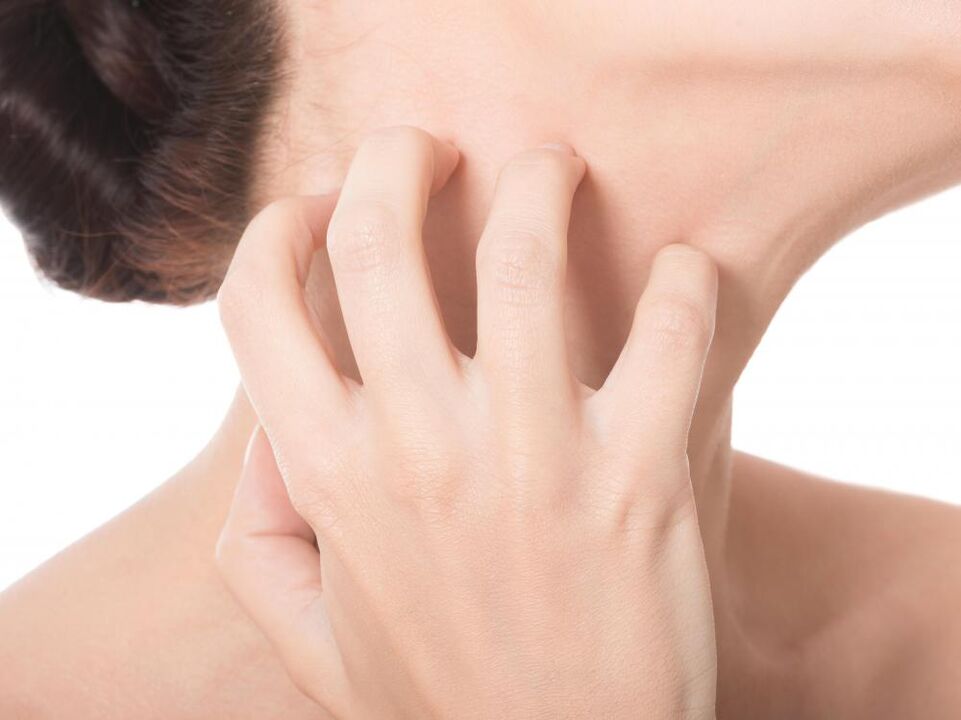
The cause of psoriatic plaque skin lesions has not been fully determined. The vast majority of physicians consider genetic predisposition to be an essential factor in the development of the pathology. Psoriasis is a systemic, non-infectious, chronic, relapsing disease that primarily affects the skin, nails, and joints.
Key Symptoms and Causes of Psoriasis
Psoriasis is characterized by increased proliferation of epidermal cells. Typically, cell division, maturation, and death occur within 3-4 weeks. For psoriasis, this procedure does not exceed 5 days.
Superficially, this appears as the formation of red or pink dense areas on the skin covered with small white scales of dead cells. If they are carefully scraped off, a shiny film (end) is revealed with a clearly visible network of capillaries. After rubbing lightly, drops of blood appeared on it.
This feature is known as the "psoriatic triad" and is the main difference between psoriasis and other skin diseases. To confirm the diagnosis, histological examination of skin granules in the affected area is performed.
The main factors that cause the appearance of psoriasis are considered to be:
- Exogenous (external causes). These include skin injuries of various physical or chemical nature.
- Endogenous (internal reason). They may have immune system disease, endocrine system disease, HIV infection. Smoking, heavy drinking, and an unhealthy diet can also trigger psoriatic lesions.
- psychogenic. In most cases, the first manifestations of psoriasis appear after a nerve shock or prolonged emotional stress.
Rashes are usually the result of infectious and inflammatory diseases. Many doctors attribute this to a weakened immune system. People with a genetic predisposition to psoriasis are advised to avoid factors that trigger psoriasis.
forms of psoriasis
One form or another of the disease depends on the type of rashes and where they are localized. During pregnancy, due to changes in the hormonal background, the manifestations of psoriasis may disappear or, on the contrary, manifest with greater force.
psoriasis vulgaris
The most common form of pathology. The first signs are pimples. They can be single or grouped on different parts or the whole body. As the disease progresses, psoriatic plaques increase and gradually merge with each other.
Depending on the form of the rash, psoriasis vulgaris is divided into:
- Punctate (punctate papules the size of a matchhead);
- Droplets (rectangular spots the size of a pinhead);
- Coin-shaped (round plaque the size of a pea).
The rash can be curved, circular, spiral, rosette. Sometimes they resemble the outlines of continents on geographic maps. If the disease is confined to the scalp, then they are talking about seborrheic psoriasis. Sometimes the neck, nose, forehead, and chest are affected. Diagnosis is difficult due to the similarity of the pathology to seborrhea.
Distinctive features are the clarity of the boundaries of the affected area, the presence of the "psoriatic triad", the silvery color of the scales. There is often itching and the hair does not fall out.
The plaques that gather on the hands and feet are what palmoplantar psoriasis gets its name. It is characterized by the formation of polished areas of skin that resemble corns. Nail psoriasis can change their color, shape and structure. They are loose, covered with small depressions and thimble-shaped.
Separation of exudate from a pimple can cause a burning sensation. The scales stick together to form a shell that fits tightly against the skin. In this case, they're talking about exudative psoriasis.
In severe cases, the entire surface of the body can be affected. The skin is hot to the touch, red, swollen, and has intense itching, burning, and tightness. This form of the disease is classified as psoriatic erythroderma.
pustular psoriasis
It rarely happens. It develops in a vulgar context or appears on absolutely healthy skin. In this case, an inflamed area appears first, where blisters form during the day, which quickly turn into pustules. Their contents are sterile and dry out and scab over when drained.
There are several types of this disease. All are characterized by chills, fever, fever, and sometimes diarrhea and vomiting. The condition worsens when pustules coalesce and occupy large areas of skin. If pustular psoriasis occurs on the background of psoriasis vulgaris, fusion is not observed.
arthropathic psoriasis
It affects joints, most commonly the facet joints (phalanges of the fingers and toes). Sometimes the pathological process affects the spine. This form of psoriasis often leads to disability.
The first sign of this disease is pain, which is exacerbated by exercise, and joint swelling. Nocturnal fever, gastrointestinal disruption, and loss of appetite characterize exacerbated disease.
Over time, the joint deforms and loses mobility. Pathology can develop independently or simultaneously with the cutaneous manifestations of psoriasis vulgaris.
All forms of pathology can develop gradually over years, or rapidly over days or even hours. Treatment options depend on the form and extent of the disease and should be developed by a specialist dermatologist.
Most often, topical agents are prescribed in the form of ointments and gels, as well as physical therapy. In some cases, drug treatment is required. Self-medication may make the disease worse.























